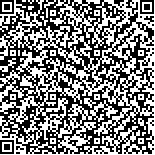本文已被:浏览 436次 下载 43次
Received:July 18, 2024 Published Online:April 20, 2025
Received:July 18, 2024 Published Online:April 20, 2025
中文摘要: 目的 通过分析糖尿病足感染(DFI)伤口分泌物病原菌分布及耐药性,为临床选用抗菌药物治疗DFI提供参考。方法 根据Wagner分级(溃疡、软组织感染、缺血坏死、足骨髓炎、坏疽)对2020年1月至2024年3月东南大学附属中大医院内分泌科病房住院的DFI确诊患者病原菌分布和病原菌耐药情况进行回顾性分析。结果 504例DFI患者分离病原菌610株,革兰阳性菌(G+)358株(58.7%),革兰阴性菌(G-)243株(39.8%),真菌9株(1.5%)。Wagner 2级197株(G+69.6%,G-28.4%),Wagner 3级179株(G+60.3%,G-38.6%),Wagner 4级214株(G+46.7%,G-51.9%),Wagner 5级20株(G+65.0%,G-35.0%),Wagner 4级与Wagner 2级、Wagner 3级菌株分类构成,组间差异有统计学意义(P <0.05)。金黄色葡萄球菌和溶血葡萄球菌对万古霉素、替考拉宁、呋喃妥因、利奈唑胺、替加环素和达托霉素敏感度高(>90%);粪肠球菌和链球菌对青霉素、万古霉素、利奈唑胺、氨苄西林敏感度高(>90%)。大肠埃希菌、肺炎克雷伯菌和变形杆菌对哌拉西林他唑巴坦、头孢哌酮舒巴坦、美罗培南和阿米卡星敏感度高(>90%);铜绿假单胞菌对妥布霉素、阿米卡星敏感度高(>90%)。结论 随DFI加深(溃疡、软组织感染、缺血坏死性、足骨髓炎、坏疽),病原菌由G+优势向G-优势转变,耐药率也随之升高。
Abstract:Objective To provide a reference for the clinical selection of antimicrobial agents in treating diabetic foot infections (DFI) by analyzing the distribution and antibiotic resistance of pathogens in wound secretions of DFI. Methods A retrospective analysis was conducted on the distribution of pathogenic bacteria and their antibiotic resistance in patients with DFI diagnosed in the Endocrinology Department of Zhongda Hospital Southeast University, from January 2020 to March 2024, based on the Wagner classification (ulcer, soft tissue infection, ischemic necrosis, osteomyelitis, and gangrene). Results A total of 504 DFI patients were included, and 610 strains of pathogens were isolated. Among them, 358 strains (58.7%) were Gram-positive bacteria (G+), 243 strains (39.8%) were Gram-negative bacteria (G-), and 9 strains (1.5%) were fungi. In terms of Wagner classification, 197 strains were from Wagner grade 2 (G+ 69.6%, G- 28.4%), 179 strains from Wagner grade 3 (G+ 60.3%, G- 38.6%), 214 strains from Wagner grade 4 (G+ 46.7%, G- 51.9%), and 20 strains from Wagner grade 5 (G+ 65.0%, G- 35.0%). There were significant statistical differences in the pathogen distribution between Wagner grade 4 and grades 2/3 (P<0.05). Staphylococcus aureus and Staphylococcus haemolyticus were highly sensitive to vancomycin, teicoplanin, nitrofurantoin, linezolid, tigecycline, and daptomycin (P>90%). Enterococcus faecalis and Streptococcus species were highly sensitive to penicillin, vancomycin, linezolid and ampicillin. Escherichia coli, Klebsiella pneumoniae, and Proteus mirabilis showed high sensitivity (>90%) to piperacillin-tazobactam, cefoperazone-sulbactam, meropenem, and amikacin. Pseudomonas aeruginosa had high sensitivity (>90%) to tobramycin and amikacin. Conclusion As the severity of DFI progresses (from ulcer to soft tissue infection, ischemic necrosis, osteomyelitis and gangrene), the dominant pathogens shifts from G+ to G-, and the antibiotic resistance rate increases.
keywords: Diabetic foot Diabetic foot infection Pathogenic bacteria Antibiotic resistance Wagner classification Infection
文章编号: 中图分类号:R587.2 文献标志码:A
基金项目:江苏省预防医学基金项目(Y12023001)
| Author Name | Affiliation |
| HU Jimei, ZHANG Hongfang, LU Jin, CHEN Mingxia | Department of Infection Management, Zhongda Hospital Southeast University (Jiangbei), Nanjing, Jiangsu 210044, China |
| Author Name | Affiliation |
| HU Jimei, ZHANG Hongfang, LU Jin, CHEN Mingxia | Department of Infection Management, Zhongda Hospital Southeast University (Jiangbei), Nanjing, Jiangsu 210044, China |
引用文本:
